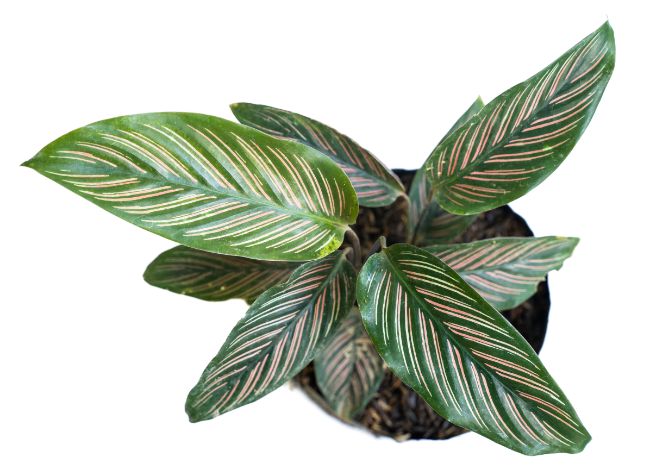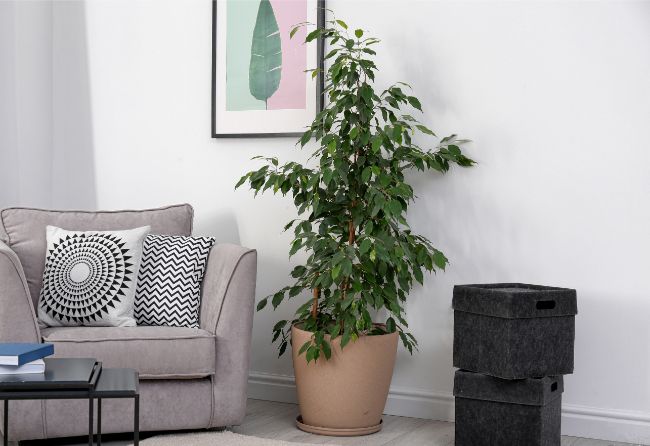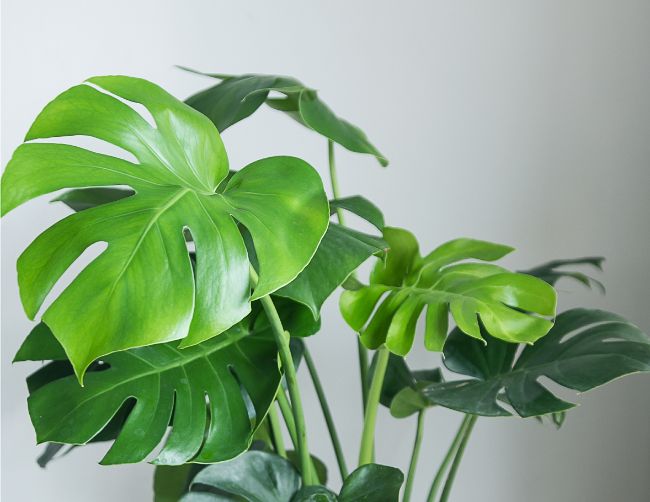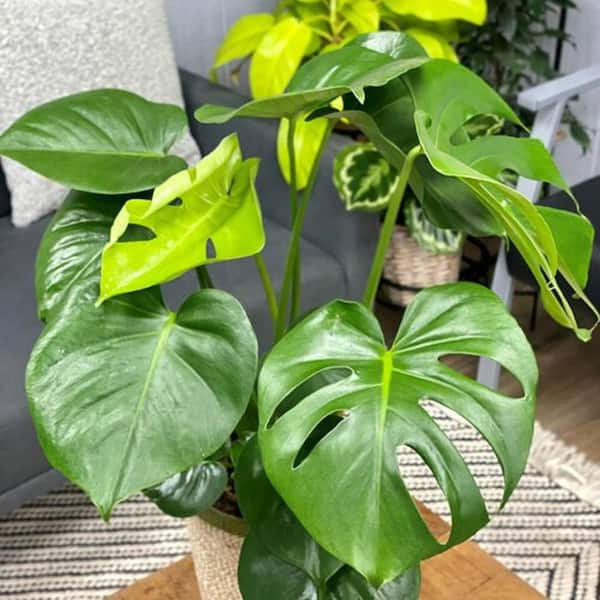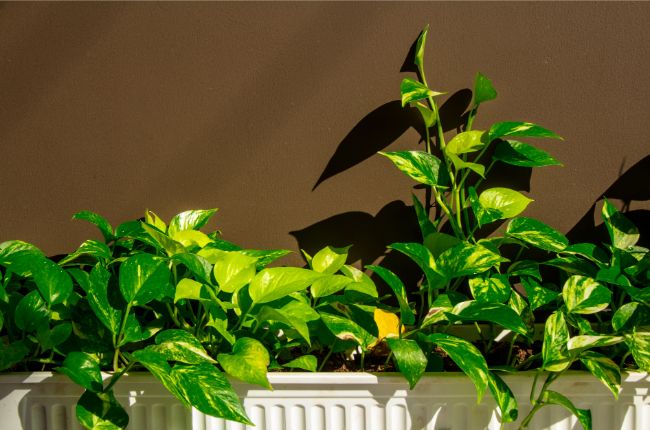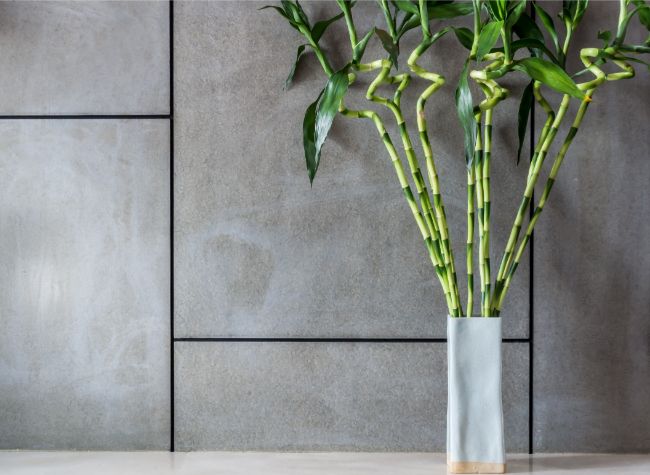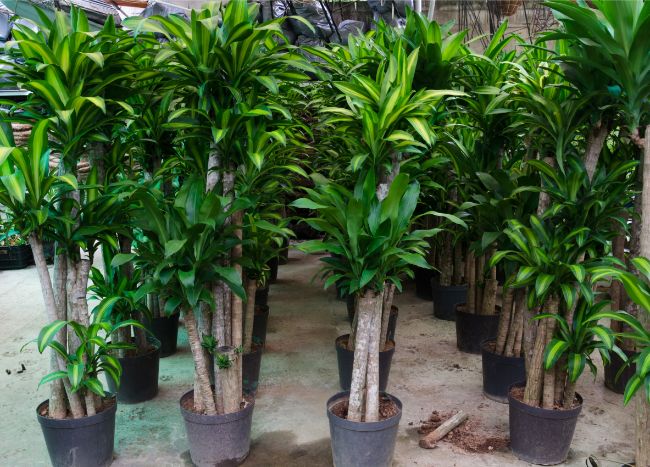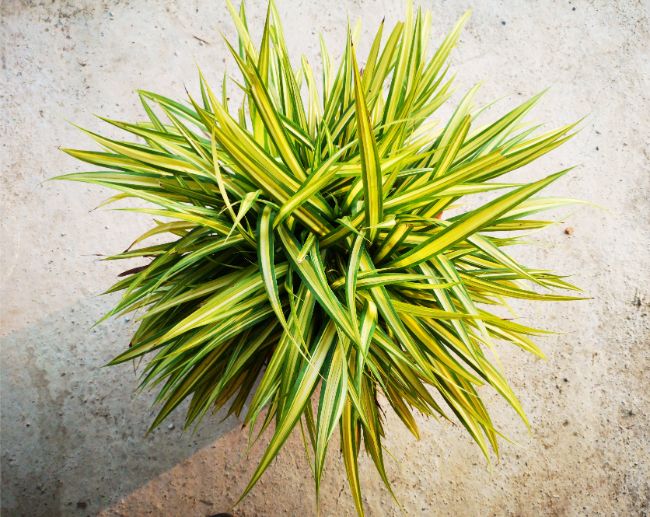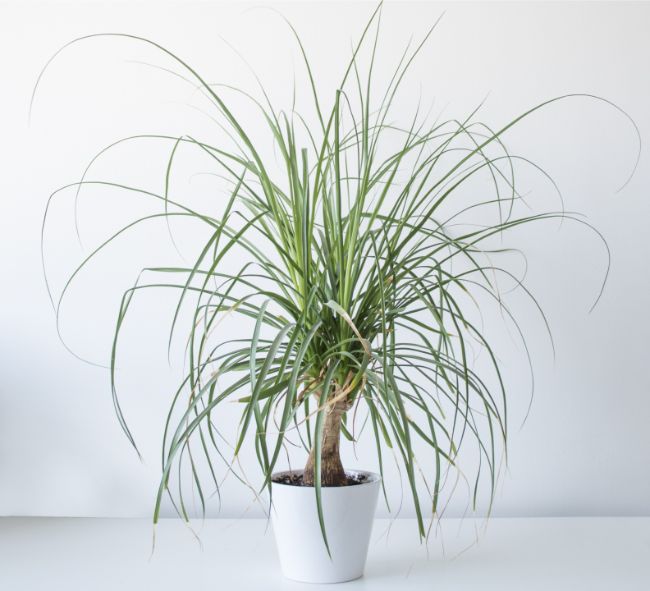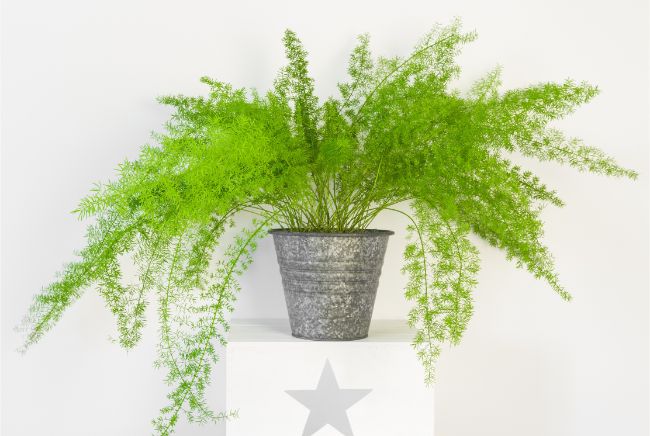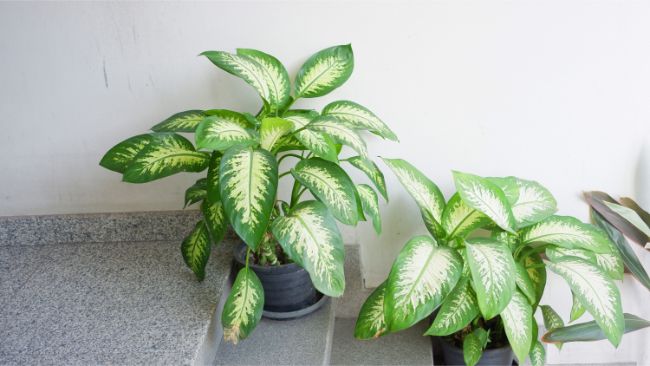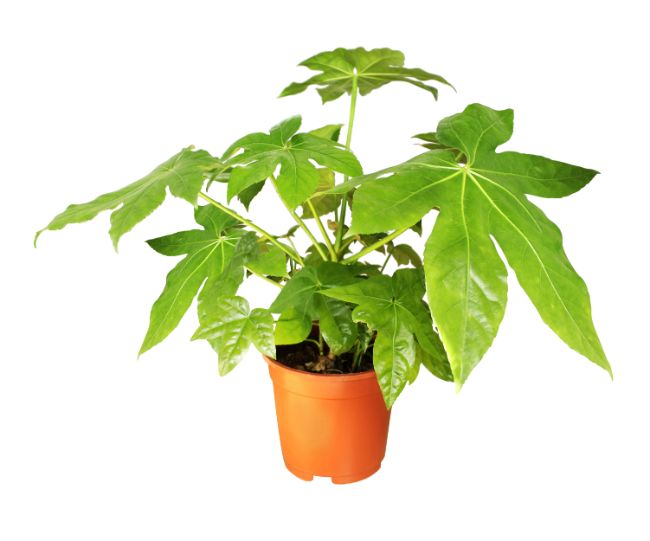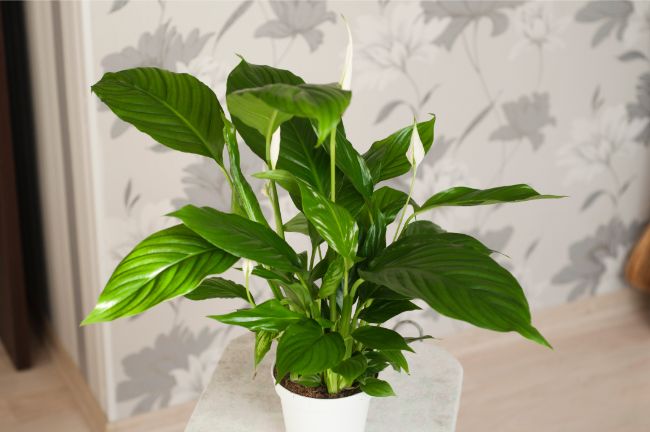Just because you live in a house or apartment with little natural sunlight doesn’t mean you’re destined to a space with no greenery. Rest assured you can still liven up your space with some of these large low light houseplants.
While most plants have better growth the more light they receive, the 18 plants covered in this article will grow to a substantial size even when they have minimal light exposure. These houseplants vary in their size, shape, and colors, providing lots of options for integrating large low light houseplants into your home.
1. ZZ Plant (Zamioculcas Zamiifolia)
Perfect for the homeowner who may forget to water their plants periodically, the ZZ plant handles both low light exposure and sporadic watering. Plants grow on average to just over two feet in height with thick, glossy green foliage. The ZZ plant gained most of its popularity in the 1990s, especially in office settings, as it can do quite well in very low lighting, surviving under fluorescent lights if necessary.
For the best growth, water your ZZ plant when the top 1 to 2 inches of the soil surface dries out and give it a dose of an all-purpose plant fertilizer every six months at a minimum. Periodically wipe dust and debris off the leaves with a clean, damp cloth. Dirty leaves cannot properly photosynthesize and you will see slowed or stunted plant growth.
2. Cast-Iron Plant (Aspidistra Elatior)
The cast-iron plant gets its name from its ability to survive a wide range of adverse conditions, making it as indestructible as cast-iron. Long before peace lilies, snake plants, or philodendrons were used to decorate homes, the cast-iron plant was a favorite with homeowners. In fact, they were popular plants in homes during the Victorian Era when living conditions were far from bright and airy.
Cast Iron plants handles low light, low humidity levels, infrequent waterings, and temperature fluctuations to reach a height of about 3 feet tall when fully mature. Read my full cast iron plant care guide for more information.
Cast-iron plants grow somewhat slowly because of their ability to survive in such a variety of conditions, so it will take time for them to mature into the large low light houseplants you wish for. Inconspicuous purple flowers periodically bloom at the base of the stems just above the soil surface.
3. Chinese Evergreen (Aglaonema sp.)
The common name for plants from the Aglaonema genus, Chinese evergreen are popular houseplants for low light conditions. Foliage comes in a variety of colors including, plain green, speckled, blotched and even variegated types. Leaves grow up to 12 inches long 3 to 4 inches wide.
While Chinese evergreen plants can and do survive in low light conditions, it’s important to put them in well-draining potting soil and maintain temperatures in the low 70s for optimal health. Temperatures below 50-55℉ can cause leaf drop so avoid placing them near leaky windows or cold drafts.
4. Snake plant (Sansevieria Trifasciata)
The snake plant, or mother-in-law’s tongue is one of the most common houseplants grown in homes where there isn’t a lot of natural sun exposure. Sword-like leaves can reach 3 feet in height or more and come in many shapes. Short and wide, narrow and long, and even cylindrical leaves give this plant diverse looks.
Easy to care for, snake plants withstand periods of drought and rarely need repotting. Read all about growing snake plants in my snake plant care guide.
Leaves come in a wide range of colors from white to yellow, green-striped, and green leaves cross-banded with distinct golden edges. Be careful not to overwater as snake plant is incredibly susceptible to root rot. I’ve covered this in my article about common snake plant problems.
5. Arrowhead Plant (Syngonium Podophyllum)
Also known as goosefoot, the arrowhead plant is closely related to the widely known philodendron. This vining houseplant needs protection from direct sunlight making it a great choice for homes with low light levels. The large arrow-shaped leaves come in a variety of hues ranging from solid greens to bronze and many shades of variegation.
Provide warm, moist air for your arrowhead plant to grow well and support structures if you want to train the vines to climb. As plants age, the leaves mature and change shape from the notorious arrowhead to a lobed leaf. You can cut off the climbing stems as they form to preserve the juvenile leaf shape if desired. Read my arrowhead plant care guide for more information.
6. Pinstripe plant (Calathea Ornata)
Pinstripe plants (Calathea ornata), aren’t as popular as some other houseplants, but they have they have such beautiful foliage and their popularity is growing.
Contrasting green and pinkish leaves sport a purplish-red underside to brighten up any indoor living space, adding a pop of color to your home’s decor.
Indoor pinstripe plants can grow up to 2 feet tall and wide, making them larger plants that fill an empty space nicely. Pinstripe plants are not drought tolerant and they need higher humidity also. This makes them a more demanding plant to keep in good condition.
Allow the very top of the potting soil to dry out before watering Calathea ornata and apply fertilizer every 4-6 weeks during the spring and summer. Read my Calathea ornata care guide to keep your in perfect condition.
7. Weeping Fig (Ficus Benjamina)
Commonly found gracing the hallways of shopping malls and many a doctor’s or dentist’s office, weeping fig plants are a member of the popular ficus family. Weeping fig is more tree-like than many other members of the family. It gets its name from the characteristic narrow, arrow-like leaves that line delicate woody stems.
Determining the proper watering schedule is key for growing weeping fig indoors. Figuring out a good watering schedule is a tricky task and the primary reason most owners see leaf drop. In fact, leaf drop is one of the most common issues with these large low light houseplants. I’ve written a separate article about the common reasons why ficus trees drop leaves.
I cover all the care requirements of weeping figs in this article, to help you get the most out of these large low light houseplants.
8. Swiss cheese plant (Monstera Deliciosa)
This big-leafed beauty adds a tropical feel to any house or apartment it resides in. Monstera leaves grow up to 2-feet wide and look like they have holes or cuts in them giving way to the common names swiss cheese plant or split-leaf philodendron. The large holes in the leaves evolved as a way for swiss cheese plants to resist damage from downpours and hurricanes in their native habitat.
In its natural setting, a swiss cheese plant can grow up to 20 feet tall. It’s less likely to become this large indoors but will easily produce vines 8 to 10-feet in length. This makes it one of the best large low light houseplants for your home, and one of my favorites.
Plants prefer high humidity and regular watering. When your swiss cheese plant is actively growing, i.e. the spring and summer, fertilize it monthly with an all-purpose fertilizer formulated for houseplants. Read more in my Monstera plant care guide.
9. Pothos (Epipremnum Aureum)
Pothos plants are one of the easiest, most commonly grown houseplants because of their laid back nature. The hardy indoor plant is perfect for beginners and survives in low light conditions. It tolerates low humidity, and won’t complain if you miss a watering every now and then.
Epipremnum Aureum are typically grown as a trailing vine – reaching 30 feet in length. They have pointed, heart-shaped leaves in shades of green with variegations in white, yellow, and pale green.
Pothos and philodendron plants are often mistaken for each other as plants are incredibly similar in appearance and growing conditions. Pothos plants tend to have larger leaves than philodendrons and are covered in a waxy coating.
10. Lucky Bamboo (Dracaena Sanderiana)
Thought to bring good luck into their space, lucky bamboo plants are popular in Asian decor and their pliable stems can be sculpted into a variety of artistic shapes such as braids, loops, spirals, and even hearts. A flourish of frilly leaves tops the stems to add flair.
Lucky bamboo plants aren’t true bamboos, but instead a member of the Dracaena family. Plants are slow-growing and thrive in low light conditions. They do appreciate a burst of sun exposure in the summer though; move your lucky bamboo to a north-facing area of your yard or porch that receives bright, indirect sunlight.
11. Corn plant (Dracaena Fragrans)
Leafy foliage reminiscent of corn stalks sits atop a thick woody trunk on the corn plant. Related to lucky bamboo the corn plant is a dramatic species sporting dark green foliage with a lime green stripe that runs down the center of each leaf. Sometimes this large plant is called a mass cane due to the tall, cane-like trunk.
Species can grow upward of 6 feet tall with leaves up to 4-inches wide, making these great low light houseplants for filling in corners or empty spaces in a room. When extremely happy, i.e. higher light levels, your corn plant will produce clusters of fragrant, creamy-white blooms that open into delicate flowers.
12. Spider plant (Chlorophytum Comosum)
Another classic, dependable houseplant, the spider plant is a great option for a large low light houseplant. It is great for hanging baskets or to set on top of a cabinet or plant stand because of its long, slender, arching leaves.
Considered easy to care for, spider plants grow in a range of conditions and suffer from very few problems. Brown tips can be a bit of an issue at times, but are easily avoided if you follow the advice in this article.
Also known as the airplane plant, spider plants produce baby plants, or spiderettes in spring and summer following flowering. The tiny plantlets dangle down beneath the mother plant looking like spiders on a web. You can leave the babies to grow to create an attractive display or remove and pot them to propagate new plants.
13. Ponytail Palm (Beaucarnea Recurvata)
Besides being adapted to low light conditions, the ponytail palm is also really easy to grow. A stocky trunk stores water, allowing the plant to go weeks without needing to be watered. This is the basis for nicknames such as a bottle palm or elephant foot tree. Watering too frequently actually causes the leaves to turn yellow and drop.
Ponytail palms are slow-growing plants but they can reach a formidable 3 or 4 feet tall indoors. When growing outside in higher light conditions they can reach an astounding 15 to 20-feet tall! Read my ponytail palm care guide to learn everything you need to know to grow a healthy ponytail palm.
14. Asparagus Fern (Asparagus Densiflorus)
Even though it’s not a true fern, nor is it related to asparagus, an asparagus fern makes a great large low light houseplant. A member of the lily family, asparagus ferns have long, arching stems that are densely covered in short leaflets that are needle-like. Plants can grow 3 to 4-feet wide with their cascading stems reaching upwards of 3-feet making this a fantastic plant for a hanging basket.
Keep your plant pruned to maintain a pleasing shape but watch out for thorns on the stems when pruning. Water when the soil begins to dry out and periodically mist the foliage with room temperature water to keep the humidity high around the leaves. Asparagus ferns will drop its small leaflets is the air inside your home is too dry.
15. African Mask Plant (Alocasia x Amazonica)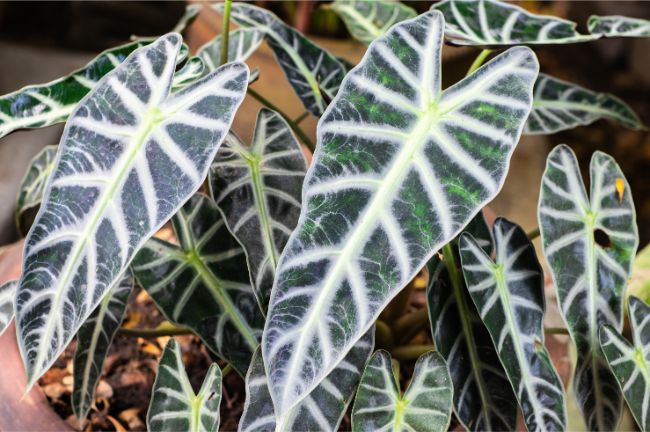
One of the more unusual looking tropical houseplants, African mask plants are prized for their unique looking leaves. Dark green leaves on Alocasia Amazonica are shaped like arrowheads or shields with large protruding veins running through them to create stunning contrast.
Depending on the variety these plants can grow from 2 feet tall and 2 feet wide to a 5 feet tall and 5 feet wide. This large low light houseplant can really make a statement in your home if you let it grow to its full potential.
Also known as the Kris plant, these large low light houseplants prefer moist soil and high humidity for the best growth. I’ve written a guide to help you care for Alocasia Amazonica to help you get the best from your plant.
16. Dumb Cane (Dieffenbachia Seguine)
These giant plants are another specimen favored by interiorscape companies when used alone or grouped together in a mass planting to create a dramatic effect. The dumb cane can reach a height of 5-feet tall with leaves up to 12 inches long.
Dieffenbachia grows well in low light or dappled shade during the spring and summer and likes to be watered regularly. Make sure to minimize exposure to cold temperatures and drafts to prevent leaf drop.
The name dumb cane comes from the plant’s milky-white sap which is moderately toxic and can cause temporary inability to speak when ingested! It’s best to keep this one out of the reach of pets and small children.
17. Rice Paper Plant (Fatsia Japonica)
Native to southern Japan, southern Korea, and Taiwan, rice paper plants are also known as the Glossy-Leaf Paper Plant or False Castor Oil. It features large, paper-thin leaves in the shape of a giant hand with a few extra fingers. The large lobed leaves can reach 16 inches across and indoors the paper plant can stretch to 6 feet tall.
Paper plants are relatively easy to grow indoors if you keep them out of direct sunlight, maintain moist potting soil that isn’t overly wet, and fertilize lightly with a weak water-soluble fertilizer periodically throughout the active growing season.
Fatsia plants need to undergo a cold period to trigger dormancy in the winter where temps drop to 50℉ at night. Paper plants rarely flower indoors due to lower light conditions but will develop clusters of small white flowers under the right growing conditions.
18. Peace Lily (Spathiphyllum Wallisii)
Another popular houseplant, the peace lily is a favorite as it tolerates lower light conditions and produces delicate white calla-like flowers in spring and summer. Plants can grow up to 6 feet tall when grown outdoors; inside they may reach 3 to 4 feet tall if they have a warm, humid environment.
Put your peace lily in an area free from cold drafts, keep the potting soil moist but not saturated, and fertilize plants with a higher phosphorus fertilizer to promote flowering. Read more about peace lily care in this article.



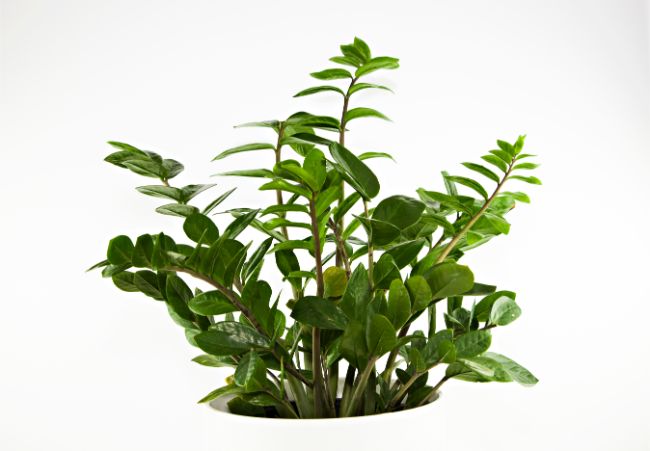
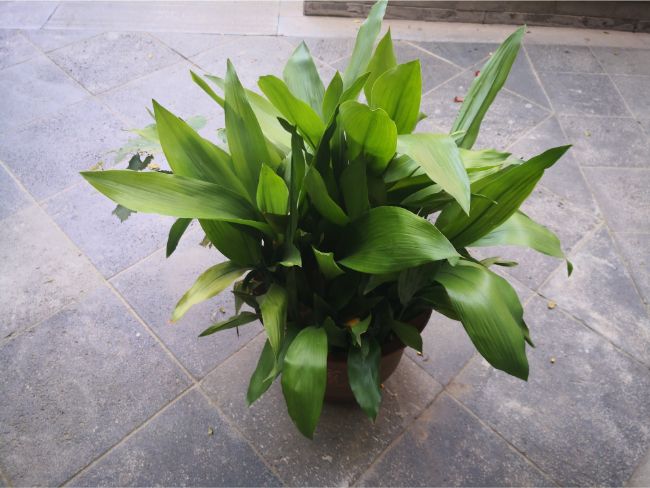
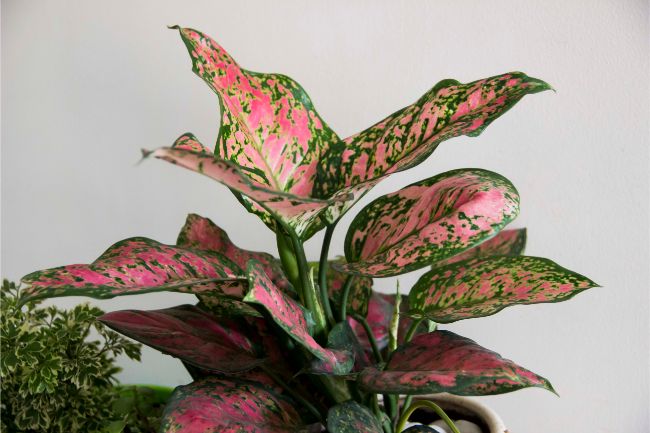

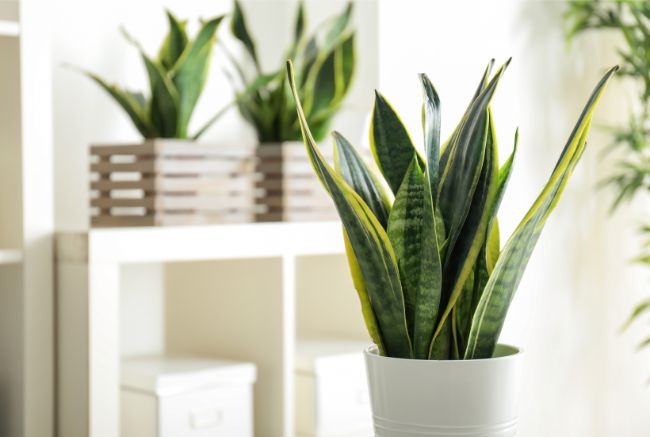
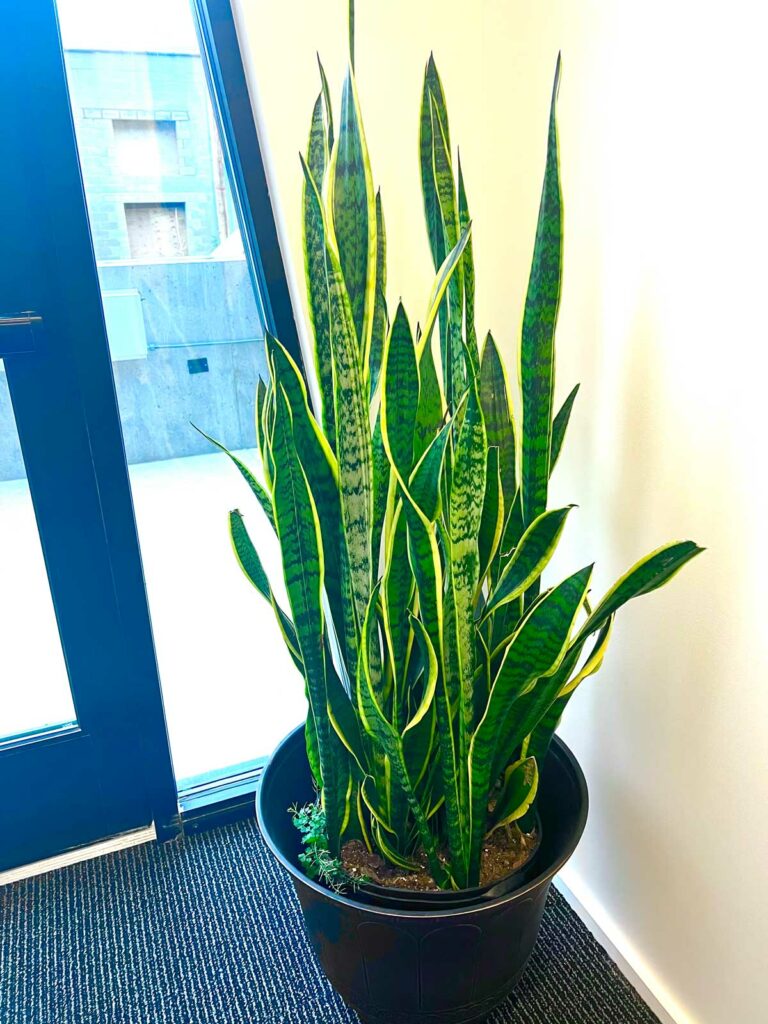
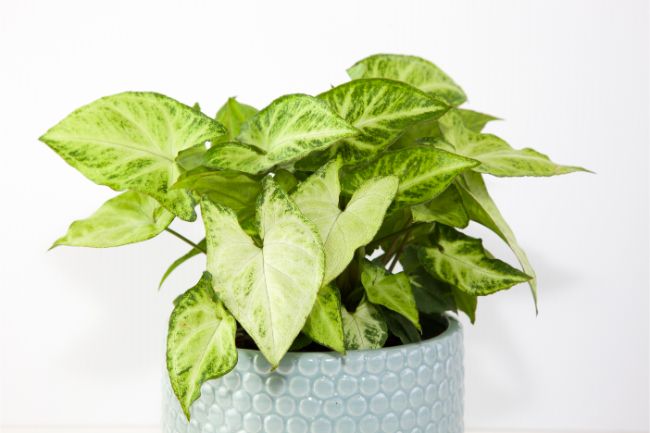
:max_bytes(150000):strip_icc()/kararileysyngoniumextra-2-af28966509c94000942ecc8f23fd3c2d.jpg)
